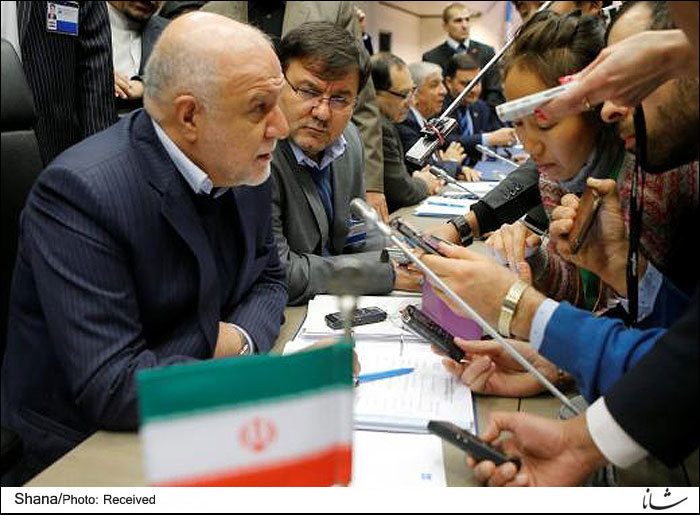OPEC meeting: another winning chance for Iran

As one of the key players in the world’s political and economic turnovers, oil market has been witnessing lots of ups and downs in recent years.
In late-2015, oil prices fell to more than half from highs of above $100 a barrel in 2014 as rising production from U.S. shale oil combined with other global oversupplies and OPEC output pushed the prices down drastically.
Low oil prices could impose big problems to the global economy. Markets around the world rely heavily on emerging economies - like Saudi Arabia and Russia - which are mostly rich in oil and plunging oil prices could result in shrinkage or slow economic growth in such countries.
To rebalance the market and to help the prices surge again, the Organization of the Petroleum Exporting Countries (OPEC) decided to cut the oil production for the first time in eight years.
After holding several meetings and going through hours of discussion and negotiation, the cartel joined by a group of non-OPEC nations - including Russia, Mexico, Kazakhstan and Oman - agreed to cut production by about 1.2 million barrels per day, or about 4.5 percent of its production, to 32.5 million barrels per day in November 2016.
Iran, Russia and Saudi Arabia played crucial roles in reaching the agreement. Iran was seen to be one of the most significant players. Reuters published a report at the time saying that a phone call between Russia's President Vladimir Putin and Iranian President Hassan Rouhani, just before the OPEC meeting, had an important part in helping to reach the deal on cutting oil output.
Some even believed that Iran was the sole winner of OPEC deal. “Iran is now able to sell as much oil as it wants and to any country it deems appropriate,”…”Iran was not only exempt from OPEC’s cuts but was also allowed to ramp up production to 3.797 million barrels per day,” Oilprice reported in December 2016.
Although OPEC efforts to rebalance the market through production cuts pushed oil prices above $50, but that made high-cost U.S. shale more profitable, leading to the recovery in American output being a threat to OPEC's bid in balancing an oversupplied market.
The U.S. shale drillers, which have built a backlog of partially completed wells in anticipation of a price recovery switched on their stand-by rigs. That, added by recovery in exempted countries like Nigeria and Libya led the oil market to tremble again, sending warning signals to the OPEC members especially Saud Arabia who is facing a huge budget deficit and is close to their first international bond issue.
Now five months after the implementation of the deal in January 2017, the number of U.S. oil rigs is dramatically increased and producers outside OPEC are further ramping up production despite the cuts being made by some nations. What market analysts referred to as “the biggest oil market risk for 2017” now is seemed to be happening.
Facing the threat of increasing oil production and the resurgent U.S. shale industry that have weighed on prices, OPEC and its allies declare “war” against U.S. shale, leaning toward an agreement on extending the deal to further limit output.
The decision is to be finalized during a meeting which is to be held in Vienna on May 25. The members are going to discuss whether to extend output cuts agreed in December last year between OPEC and 11 non-member countries, including Russia.
What’s in the deal extension for Iran?
With the next OPEC meeting approaching, now the big question is that what this extension would mean for Iran and how will it affect the country’s economy?
According to market analysts lots of parameters should be considered in this regard but what is obvious is that extending the deal would definitely be in line with Iran’s economic policies.
Saudi Arabia, Russia and Iran are again the most effective poles of the deal. Saudis, whose position in the market is weakened due to the significant cuts they have made in an effort to push the prices, are very likely to once again compromise with Iran.
They need the prices above $50 for Aramco’s bid to go as planned. The kingdom’s vision 2030 plan depends heavily on the upcoming IPO so they are doing whatever it takes to maintain the oil prices above $50.
Reuters reported on May 15 that Saudi Arabia and Russia, the world's top two oil producers, made a joint announcement approving the need to extend output cuts for a further nine months until March 2018.
Having Russia in the equation and considering other OPEC and non-OPEC nations’ positive signals for backing the extension, there is a great chance that Iran won’t be needed to cut its production levels.
With Saudi and Russian early announcement, markets have started reacting positively to the notion of deal extension.
Extending the cuts further to 2018 is now very likely which will definitely help the prices go up in the near future.
Putting all these pieces together, one can say that Iran will probably be one of the main winners of the May 25 gathering and shall not leave the meeting empty handed.
The probable production cuts could once again provide a stage for Iran to make profitable use of its diplomacy and since – as explained - the country would definitely gain from the extension of OPEC, non-OPEC deal, so it will be reasonable for Iranian oil officials to do their best achieving this goal.
EF/MG
